Commemorative Integrity Statement
Chilkoot Trail National Historic Site
National Historic Site Objectives
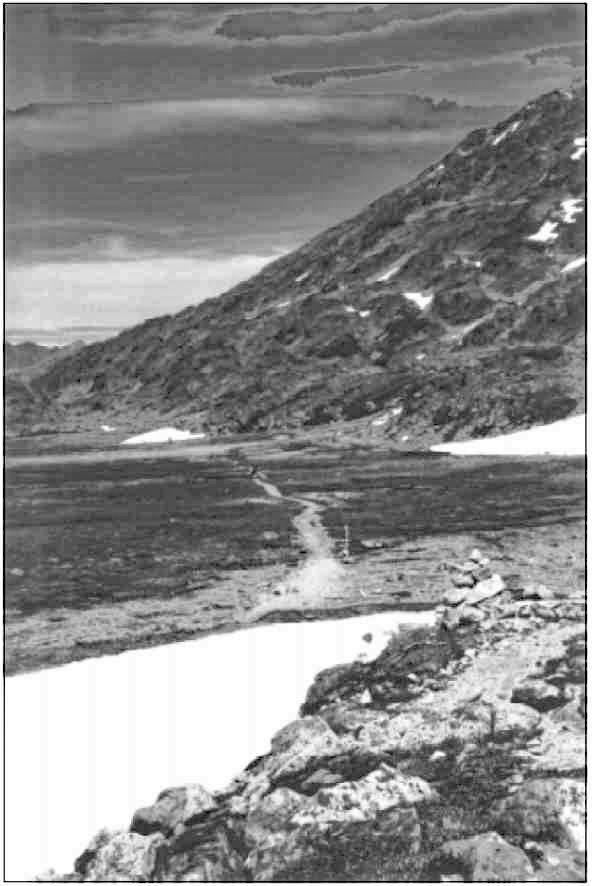
The National Historic Sites Policy outlines three objectives for National Historic Sites. These are:
- * To foster knowledge and appreciation of Canada’s past through a national program of historical commemoration.
- * To ensure the commemorative integrity of national historic sites administered by Parks Canada by protecting and presenting them for the benefit, education and enjoyment of this and future generations, in a manner that respects the significant and irreplaceable legacy represented by these places and their associated resources.
- * To encourage and support the protection and presentation by others of places of national historic significance that are not administered by Parks Canada.
Commemoration focuses on what is nationally significant about a site, and includes protection as well as presentation. The National Historic Sites Policy states that;
protection and presentation are fundamental to commemoration since without protection there can be no historic site to be enjoyed, and without presentation there can be no understanding of why the site is important to our history and, hence, to all Canadians.
Definition and Purpose of Commemorative Integrity
The purpose of a commemorative integrity statement is to focus our management of a site on what is most important; and to ensure that we address the whole (the “site”), not just the parts (the “individual resources”). For national historic sites commemorative integrity is key to developing and implementing work plans, along with service to clients and ensuring efficient use of public funds. Commemorative integrity is also the basis for reporting to Canadians on the state of their national historic sites.
Commemorative integrity is used to describe the health or wholeness of a national historic site. A national historic site possesses commemorative integrity when the historic values and those cultural resources symbolizing or representing its importance are not impaired or under threat, when the reasons for the site’s national historic significance are effectively communicated to the public, and when the site’s heritage values are respected by all whose decisions or actions affect the site.
To effectively focus on commemorative integrity it is necessary to identify and evaluate those characteristics of a site that led to its recommendation by the HSMBC and designation by the Minister. Those characteristics that make the site of importance to all Canadians are Level 1cultural resources. Characteristics of the site determined to have a cultural value of regional or local importance are Level 2 cultural resources. All Level 1 and 2 cultural resources will be managed by Parks Canada under the principles of the Cultural Resource Management Policy.
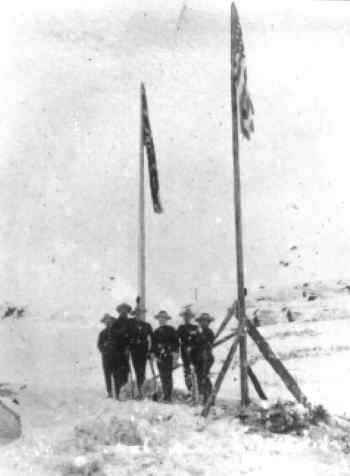
A sound grasp of historic value is essential to ensuring commemorative integrity. This includes a definition of what constitutes the extent of the nationally-designated historic place. The Parks Canada Cultural Resource Management Policy requires that evaluation of resources not only determine their levels, but “what it is that constitutes their value”, that is to say, what particular qualities and features make up the historic character of the cultural resource. Historic value can reflect both physical (tangible or artifactual) as well as symbolic (intangible or associative) attributes. It can be derived from an association with many periods in history, a single episode, or from the interaction of nature and human activities.
It is those Level 1 values, that is those attributes of resources or messages, of importance to all Canadians, that shall be the highest management priority for Parks Canada. These values and the threats to them are described in more detail in the section “Commemorative Integrity Objectives”. The whole trail is administered by commemorative agencies, the American portion of the trail is managed by the US National Parks Service as part of the Klondike Gold Rush National Historic Park while that part of the trail in Canada is managed by Parks Canada as Chilkoot Trail National Historic Site. In the following discussion the complete trail is considered in its historic context. However, details of cultural resource management are limited to those resources under the management of Parks Canada.
Commemorative Intent
Commemorative intent describes the reasons for the site’s national significance, it is a statement of what is nationally significant about this site. It refers specifically to the reasons for this site’s national significance, as determined by the ministerially-approved recommendations of the Historic Sites and Monuments Board of Canada (HSMBC).
Declared of national historic significance in 1987, Chilkoot Trail National Historic Site is part of the complex of Canadian national historic sites related to the Klondike gold rush. These sites, some with recommendations dating back to 1926, consider the social, economic and political components shaping the Yukon region over the last century. From HSMBC minutes in 1967 it is clear the Board was aware of the intimate connection between the gold rush and the importance of the Chilkoot Trail in the movement of goods and people into the Yukon. Further, at its November 1987 meeting the Board recommended that:...
in the context of the Klondike Gold Rush as a social phenomenon, the Chilkoot Trail is of national historic significance and its development, jointly with the American Park Service, as part of an international historic park should be encouraged.
From this recommendation the statement of commemorative intent for the Chilkoot Trail, a traditional trade and travel route connecting the upper Yukon River with the Pacific Coast, can be determined as:
The Chilkoot Trail was designated a national historic site because of the role it played in the mass movement of people to the Yukon during the Klondike Gold Rush.
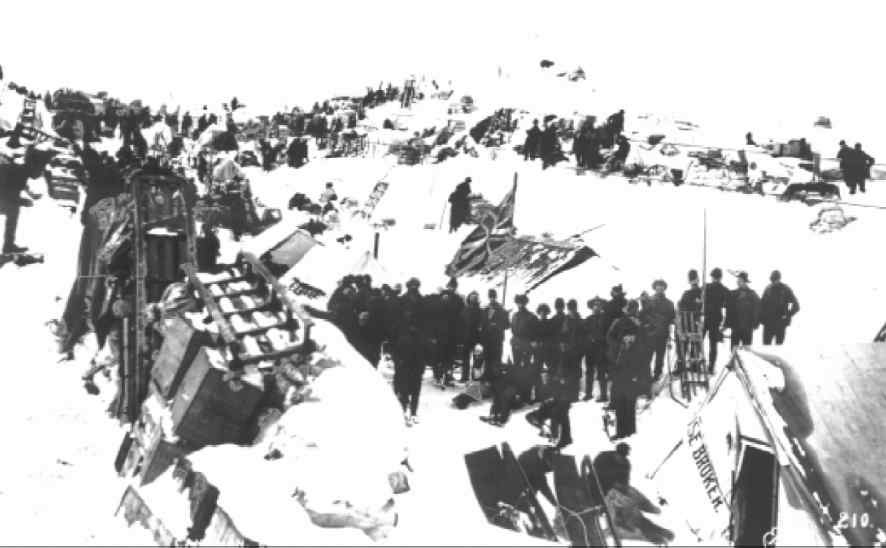
Commemorative Integrity
The National Historic Sites Policy states that a national historic site has commemorative integrity if:
- the resources that symbolize or represent its importance are not impaired or under threat,
- the reasons for the site’s national historic significance are effectively communicated to the public, and
- the site’s heritage values are respected by all whose decisions or actions affect the site.
These three elements cover the major responsibilities of Parks Canada in the management of the National Historic Site. To measure the success and effectiveness of this management commemorative integrity objectives have been identified and listed after each of three elements have been described. Therefore, at Chilkoot Trail, commemorative integrity will be ensured when:
1. Resources That Symbolize or Represent the National Significance of the Chilkoot Trail are Not Impaired or Under Threat
Resources imbued with these Level 1 historic values are those that symbolize or represent the Chilkoot Trail’s national significance. These cultural resources are thus instrumental in, or integral to, the designation of national historic significance. On the Chilkoot Trail these resources include the route through the Chilkoot Pass and its role during the gold rush period (1897-1900) as an access to the Yukon. The setting of the trail, its viewscapes and the relict cultural landscape reflect the impact of the trail experience upon those present during the rush. Landscape features, in-situ resources and collected objects relating to this period have Level 1 attributes and together with the items noted above are the resources which are the cultural resource management focus because of their relationship to the national historic significance of the Chilkoot Trail. It is these features which shaped the experience and subsequently defined the memories, stories and history of the gold rush travellers. The following Level 1 cultural resources must not be threatened or impaired:
1.a.1. Historic Place
Background
The Chilkoot Trail extends from Taiya Inlet in Alaska to the headwaters of the Yukon River in British Columbia. Long a part of traditional trade and travel routes of First Nation people in the region, the trail connects disparate ecological zones encouraging a long term mutually beneficial communication between culturally distinctive First Nation groups. For the gold rush Stampeder the trail was part of a larger network of trails and river routes used to reach the Klondike Gold Fields of the Yukon interior. The Chilkoot promised the shortest and most immediate access for Stampeders. Although the trail has a long history of continuing use, it is the social aspects of the mass movement of newcomers to the Yukon during the Klondike Gold Rush that is commemorated at Chilkoot Trail National Historic Site.
Values
The associative value of historic place/cultural landscape or that “geographical area that has been modified, influenced, or given special cultural meaning by people” (Guiding Principles, p.119) on the Chilkoot Trail is expressed in the overall geography of this route through the coastal mountains. The linearity of the route and visual sense of containment in its own valley, and the obvious relationship between the siting of the historic trails, the natural stopping places and surrounding topography were and continue to be central to the traveller’s experience. The viewscapes from the trail are an integral part of the value of the site.

A strenuous hike, the trail traverses the mild climate of Pacific rainforest through the exposed high alpine of the summit to the dry, wintery cold of the boreal forest of the Yukon River headwaters. In the summer the sound of moving water encapsulates the trail corridor, in winter the glistening white of wind packed snow and blazing blue skies are visually striking and the wind blows through the Pass year round. At the summit of the Pass the stampeders often broke out of the fog and clouds of the marine environment to gaze northward upon the sunlit, ragged mountain tops defining the narrow, rugged valley of the Chilkoot. The First Nations saw the trail as a meeting place between homelands. The Stampeders endured it as an obstacle on their journey to the promise of a golden frontier. Different perspectives and cultures experienced the t trail in different ways during the gold rush but all groups shared the physical challenges and visual excitement of this striking montane environment. This shared experience is a central element in defining the social character of the gold rush in the Chilkoot.
The attributes of the historic place of greatest importance for this commemoration are the unimpaired geographic character of the route, that is, its linearity, visual sense of containment, the relationship of the trail’s history to the dynamic natural environment and the dramatic viewscapes from the trail.
1.a.2. Commemorative Integrity Indicators for Historic Place
Historic Place is safeguarded when the features of value are respected and revealed, that is:
- * The geographic character of the historic corridor of the trail is maintained. This character is made up of the linearity of the route and the visual sense of containment inits own valley.
- * The evolution of the corridor’s natural environment is managed as a relict landscape.
- * The relationship between the commemorated trail and the natural stopping places and the local topography is maintained.
- * The viewscapes from the summit of the pass and the historic trail corridor are unimpaired. The skyline is a particularly vulnerable resource in this respect.
- * Integral to the protection of the viewscapes is the broad community understanding of the importance of the viewscapes to reinforces both national and local dimensions of the Chilkoot Trail story.
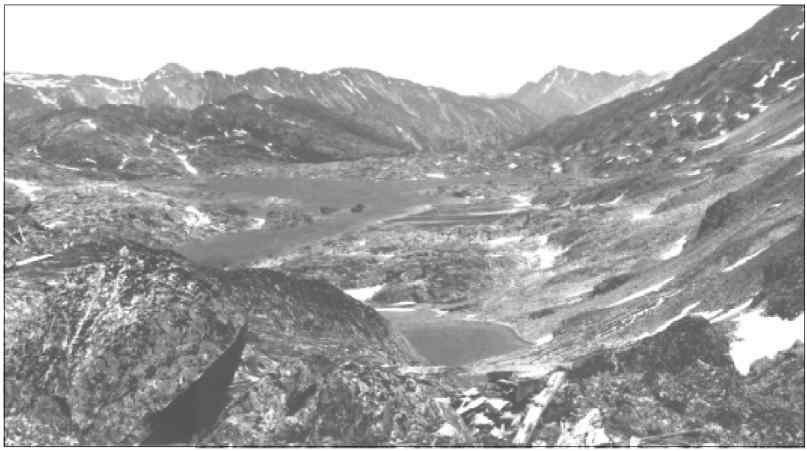
1.b.1. Landscape Features
Cultural features in the landscape are another physical expression of the values of the historic place. Through the modification of the place people have left an imprint of their presence and a reflection of the social organization developed to cope with the mass movement through the pass during the gold rush. These physical attributes are directly connected to the commemorative intent and include both transport and camp remains.
The commemoration period foot trails, roadways and vestiges of the associated water routes of the Chilkoot run from the summit of the Pass to Bennett. The location, siting, traffic wear patterns and surviving log and stone work of these trails, docks and roadways are heritage character-defining features. All provide insights into the social organization developed to allow the mass movement of newcomers into the Yukon.
At those natural stopping places along the trail, used by the gold rush Stampeders just as by earlier First Nation travellers, are distinctive cultural features created during the rush. At the summit, along the shores of the lakes, and at creek crossings and sheltered positions on the hillsides are tent platforms, rock walls, dugout embankments and graves. These features are tangible modifications to the place speaking about the life and experience of those travelling through the pass during the gold rush.
These cultural landscape resources are directly related to the reasons for which the site was recognized.
1.b.2. Commemorative Integrity Objectives for Landscape Features
Cultural features in the Landscape are protected when the heritage character-defining features are respected, that is:
- * The location, orientation and character of the commemorated trail is maintained. Changes made for the protection of cultural resources and public safety are evaluated under the CRM Policy.
- * The location and character of these landscape features are maintained.
- * The quality and character of these features are preserved in accordance with conservation standards. Erosion and visitor damage to these features is monitored and mitigation measures are in place.
- * The presentation value of these features are realized through full heritage recording.
- * The relationship between these features is studied and interpreted.
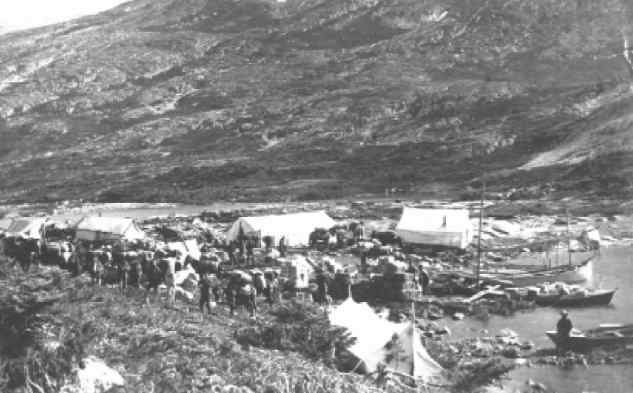
1.c.1. Built Resources
The Presbyterian Church at Bennett is an important tangible resource directly related to the designation of this national historic site. It sits in its original location, high on a hilltop over-looking Bennett Lake and the White Pass & Yukon railway station and has an important symbolic value as the sole surviving structure from the commemoration period. Used as an icon of the gold rush experience the heritage character-defining features of the church are its location and orientation, massing, rustic cladding, remaining original materials and architecture. The method of its construction, by volunteers during the rush, and its use as a centre of social activity in the community of Bennett, are also factors directly linking this structure to the commemorative intent. Its survival, and continued maintenance as a built feature of the Bennett landscape reflects its recognized importance as a symbol of the gold rush community.
1.c.2. Commemorative Integrity Objectives for Built Resources
Built Resources - Protection of the Bennett Church, the only surviving building from the commemoration period, means that its character-defining features are respected, that is:
- * Its location and orientation are maintained.
- * Its appearance, defined by massing, rustic cladding, and architecture, is retained.
- * Its original building materials and cladding are conserved in accordance with conservation standards.
- * The presentation value of the Church, as the only extant gold rush structure on the site, is realized through a full heritage recording.
- * Its physical and social relationships to the Chilkoot Trail site and former community of Bennett is interpreted.
1.d.1. In-situ Resources and Collected Objects
The route of the stampeders is littered with the remains of their trip. Discarded tins and boxes, boats frames and old sleds, graves and cemeteries, horseshoes and wagon wheels, even patches of introduced botanical species are associative indicators of the appearance and lifestyle of the newcomers. Those in-situ resources dating from between 1897-1900, and linked to the mass movement of people are Level 1 cultural resources.

The heritage character defining attributes of these in-situ resources are their location, content, and deposition in meaningful assemblages.
Several collections of objects related to the Chilkoot Trail are managed by Parks Canada. The primary value of these collections is that they form a representative collection of certain artifacts found on the trail which may be lost to natural deterioration and form a permanent record of what was once found on the trail. Those artifacts elated to the commemorative period and directly linked to the commemorative intent are Level 1cultural resources. The heritage character defining attributes of these tangible items will vary, but will generally be built upon knowledge of their provenance, purpose, and physical condition.
1.d.2. Commemorative Integrity objectives for In-situ Resources and Collected
Objects In-situ Resources and Collected Objects are safeguarded if:
- * Documented in-situ resources of the commemoration period and in situ remains in areas identified of ‘potential archaeological significance’ for the same period are respected in accordance with archaeological conservation practices.
- * Collected objects of the commemoration period are protected and access is ensured for research and interpretation.
2. Reasons for the Site’s National Historic Significance are Effectively Communicated to the Public
This second element of Commemorative Integrity focuses on what is nationally significant, and is derived from the commemorative intent of Chilkoot Trail National Historic Site. The following are the messages of national historic significance which must be effectively communicated to the public:
Messages of National Historic Significance for Chilkoot Trail National Historic Site
- * The role of the Chilkoot Trail in the mass movement of people into the Yukon during the Klondike gold rush of 1897-1900.
Integral to the understanding of the significance of the above message of national significance are the following:
- * The character, importance and reasons for use of the Chilkoot Trail as a route between the coast and the interior.
- * The border character of the Chilkoot Pass summit.
- * The lifeways and perceptions of the historic place by the diverse groups experiencing the Chilkoot Trail during the commemoration period.
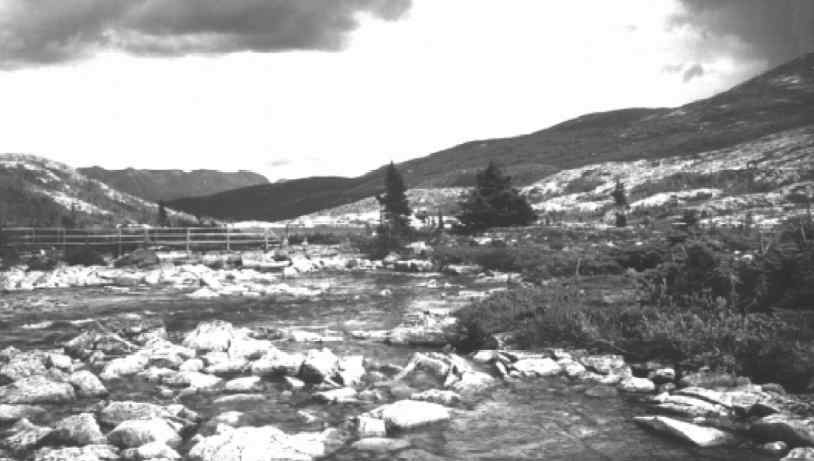
The reasons for Chilkoot Trail’s national historic significance are effectively communicated to the public when:
All site clients are presented with and understand the principle messages of national significance, that is;
- * The role of the Chilkoot Trail in the mass movement of people into the Yukon during the Klondike gold rush of 1897-1900.
- * The geographic and historic relationship of the site to the various regional mountain passes and the northwest of North America, is communicated to clients to provide the wider context for understanding the significance of the site.
- * The importance of the site as a whole is understood and interpretation both on site and off site is integrated and balanced.
- * The character, importance and use of the site as a link between the Pacific coast and the Yukon interior is presented.
- * Interpretation of the different cultural perspectives on the trail experience during the commemoration period is integrated and balanced.
- * Interpretive media are diversified and balanced to ensure a meaningful experience for all site clients. Chilkoot Trail will be presented as a place to learn about a nationally significant part of Canada’s past.
- * The messages and the trail are presented with integrity. Conjectural information is acknowledged and original resources and contemporary services are distinguished.
- * Community support for and participation in events and activities at the site related to the messages of national significance are encouraged.
3. The Site’s Heritage Values are Respected in All Decisions and Actions Affecting the Site
Other heritage values associated with the Chilkoot Trail relate to the evolution and character of the area’s natural environment, its history and continuing use as a First Nation trade and travel route and homeland, the pre-rush use of the trail by prospectors exploring the Upper Yukon River basin, post-goldrush recreational use, and a range of related values and linkages within which the Chilkoot Trail gains other values.
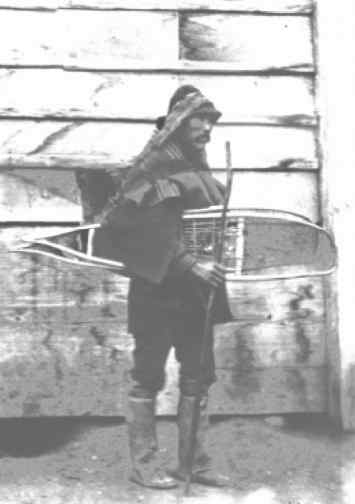
3.a. The Natural Environment
The dynamic ecology of the natural environment in the Chilkoot route is an important aspect of the traveller’s experience. The opportunity to witness seasonal changes and ecological transitions from rainforest to alpine to boreal forest during a hike along the trail are an integral part of the Chilkoot’s value. Many visitors to the site are attracted by the rich and varied natural experience provided by the local wildlife populations and distinct ecological zones.
The importance of the route’s ecosystem features are recognized in Parks Canada’s role as an important environmental steward. To fulfil this role Parks Canada will determine the significance and state of the ecosystem features in the site, and those features identified as part of a special significance will be protected.
3.b. First Nation History
Use of the trail before, after and during the commemoration period by First Nations reflects the use of the area as a link joining families, a trading route for both indigenous and imported products and as an area for harvesting the region’s natural resources. First Nation use of the trail as a trade and travel route before the gold rush period can be broken into several periods. Trade to the early nineteenth century was largely based on the exchange of indigenous materials. From1800 there was a commercial fur trade which peaked in the middle third of the century. The development of a successful packing business to manage the initial Euro-American entry into the Yukon interior was subsequently overtaken by the events of the gold rush. Continuing use of the trail area as a First Nation hunting and berry picking area remains an important part of the heritage of the area. Resources associated with these activities include placenames, archaeological remains, historic objects, contemporary family camps and a vibrant oral tradition.
3.c. Service and Recreational Use
The NHS area near Log Cabin continued to fulfil a transport function after the gold rush. Remains of a hotel, operating to about 1915, and related railway services, some still in use, are located here. These sites reflect the continuing evolution of the transport function in the Chilkoot region. Recreational use of the trail in the post-gold rush period reflects the continuing desire of visitors to obtain an understanding of the trail’s importance to the iconography of the Canadian northwest.
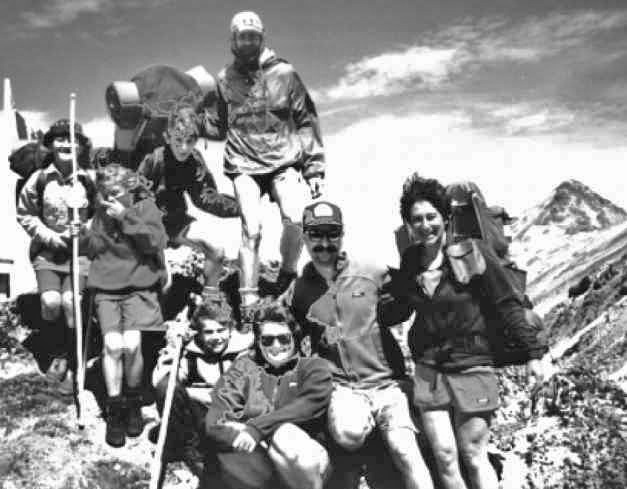
3.d. Integration into NHS System
The Chilkoot Trail is part of the family of national historic sites, and has value as an integral element of this system commemorating aspects of the complex heritage and identity of Canada. Thematically Chilkoot Trail National Historic Site is directly linked to an international network of gold rush and Yukon heritage sites. These include Seattle and Skagway/ White Pass and the Dyea/Chilkoot units of the USNPS, the S.S. Klondike, Dawson City and Klondike Gold Fields National Historic Sites managed by Parks Canada and a series of sites co-managed by the Yukon Territorial Government and Yukon First Nations including Canyon City and Fort Selkirk.
3.e. Partners and Community Links
Although land claims negotiations have not yet been initiated for this region of British Columbia both the Taku River Tlingit and the Carcross-Tagish First Nations have extended claims over the Chilkoot Trail area.
There has been an operational partnership with the USNPS Dyea/Chilkoot Trail unit for many years. As more and more management issues are dealt with jointly the co-operative links are expected to strengthen and enhance the presence and resource effectiveness of both management agencies.
Many people within the Yukon, northern British Columbia and southeast Alaska claim a special personal relationship with the Chilkoot Trail. Annual trips and the celebration of past and present adventures on the trail ensure a significant community interest in the management of the site.
3.f. Related Heritage Places
Adjacent to the site are a range of important heritage resources including related gold rush period sites and artifacts and railway materials. Immediately adjoining the site are remains of the White Pass Trail developed during the goldrush and the site of the White Pass & Yukon Route railway. Trail resources include some of the best preserved examples of a turn of the century NWMP post, horse packing camps and trail corduroy. The railway right of way, associated structures, such as the station and outbuildings at Bennett and the WW II pipeline, and the remains of earlier rights of way and structures speak to the continuing use of the area by newcomers. The other heritage values of the Chilkoot Trail are respected by all those whose decisions or actions affect the site when:
- * The structure and function of the ecological zones are unimpaired by stresses induced by human activity and are likely to persist.
- * Site visitors understand how the changes evident in the natural environment help place the trail in a continuum of history.
- * First Nation history, cultural values and resources related to the site are acknowledged and respected.
- * First Nations traditions of active involvement in the site are continued.
- * The community and the site understand the importance of working together to improve the cultural experience of the site.
- * The evolution of the site’s use over time and its identity including the development of recreational use of the trail corridor are acknowledged.
- * Related cultural resources in adjacent properties are identified and movement to protect and present these resources are encouraged.
- * The significance of the Chilkoot Trail as part of the larger system of national historic sites is communicated to site visitors
- * The thematic links of the Chilkoot Trail to other gold rush and aboriginal sites across Canada are explained.
- Date modified :